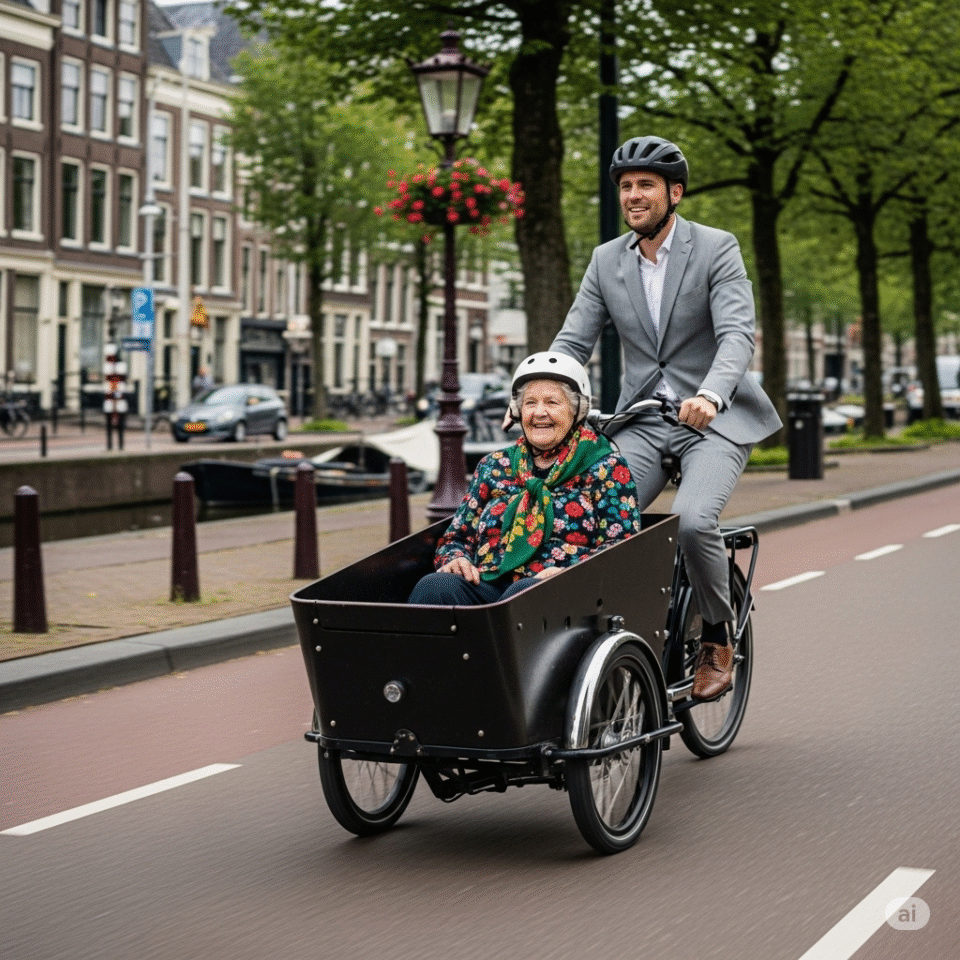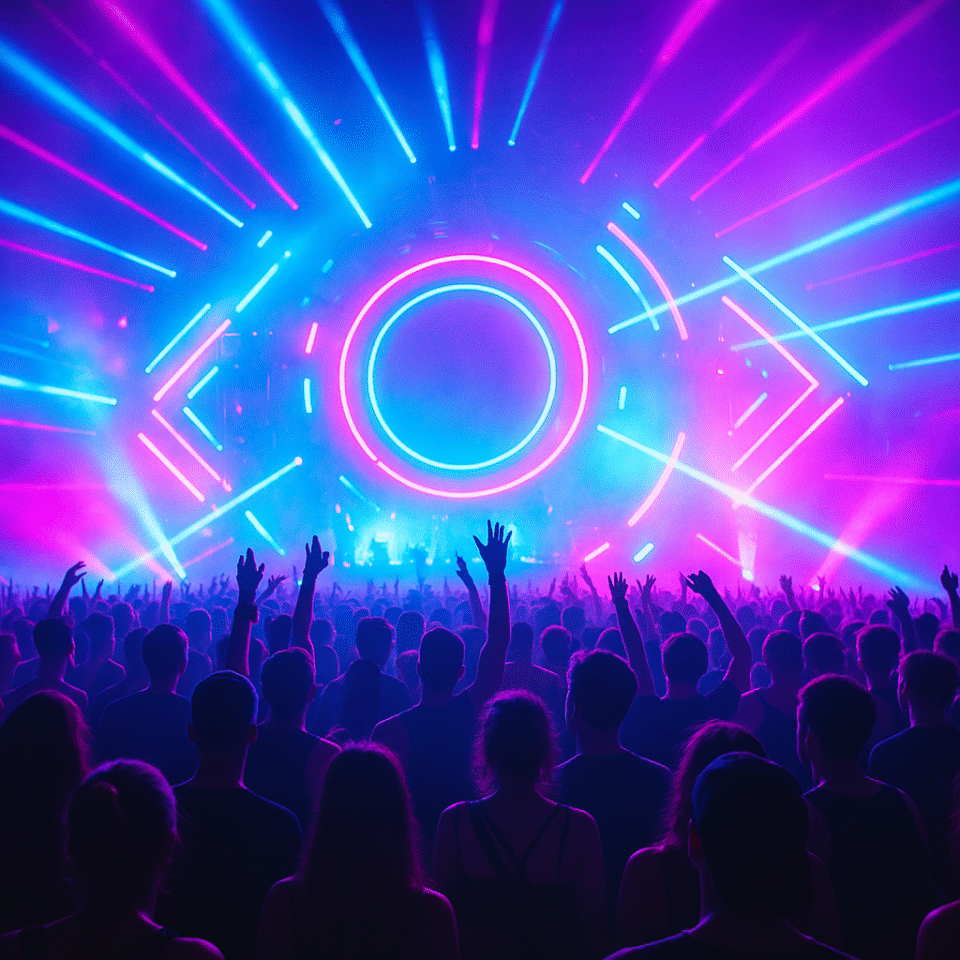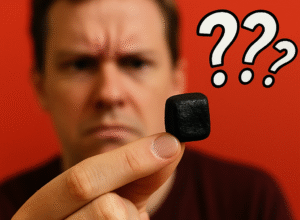Modern Marvel & Maritime Gateway
The Netherlands’ second-largest city offers Americans a fascinating contrast to Amsterdam with its bold architecture, working port culture, and innovative urban design. Rotterdam’s post-war rebuild has created one of Europe’s most forward-thinking urban environments.
Rotterdam stands as a testament to Dutch resilience and innovation, rising from the ashes of WWII bombardment to become one of Europe’s most architecturally daring cities. While Amsterdam captivates with its historical charm, Rotterdam fascinates with its bold modernity and bustling maritime energy.
The City of Reinvention
A Phoenix From the Flames
Unlike many Dutch cities that showcase centuries of continuous development, Rotterdam offers a different story altogether. The devastating bombing of May 1940 destroyed much of the historic center, forcing Rotterdam to rebuild almost entirely from scratch. Rather than recreating the past, the city embraced forward-thinking design, resulting in a skyline that feels more akin to American urban centers than traditional Dutch towns.
This reconstruction period shaped not just Rotterdam’s physical appearance but also its cultural identity. The “Rotterdam approach” became known for its pragmatism, innovation, and willingness to experiment—characteristics that still define the city today.
Architectural Playground
For Americans accustomed to modern urban landscapes, Rotterdam’s architectural boldness will feel both familiar and refreshingly experimental. The city features iconic structures like:
- The Cube Houses (Kubuswoningen) – Piet Blom’s tilted yellow cubic residences that defy conventional housing design
- Markthal – A massive food hall housed within a horseshoe-shaped residential building featuring colorful interior artwork
- Erasmus Bridge – The elegant “Swan” bridge connecting north and south Rotterdam
- Rotterdam Central Station – A sleek, angular transportation hub that symbolizes the city’s modern identity
- De Rotterdam – Rem Koolhaas’s “vertical city” complex of three interconnected towers
- The Depot Boijmans Van Beuningen – The world’s first publicly accessible art storage facility with its striking mirrored bowl exterior
Each of these landmarks represents Rotterdam’s commitment to architectural innovation and urban reinvention. For Americans interested in urban design and architecture, the city offers a living laboratory of solutions to contemporary challenges.
Port City Culture
As Europe’s largest port, Rotterdam’s identity is deeply tied to its maritime heritage. The city’s international outlook and commercial spirit have created a notably different cultural atmosphere from Amsterdam or The Hague. Americans may recognize elements of coastal cities like Baltimore or Seattle in Rotterdam’s working harbor areas, industrial aesthetics, and pragmatic approach to urban development.
The port’s historical development has shaped Rotterdam’s character in profound ways. Throughout the 19th and early 20th centuries, “harbor barons” and commercial elites drove the port’s expansion, creating a city whose fortunes rose and fell with global trade patterns. Today, the Port of Rotterdam remains a crucial economic engine not just for the city but for all of Europe, handling over 440 million tons of cargo annually.
What Makes Rotterdam Unique
Cultural Diversity and International Outlook
Rotterdam boasts an impressive multicultural population, with over 170 nationalities represented. This diversity has shaped the city’s cultural landscape, creating neighborhoods with distinct international influences and a dynamic culinary scene spanning from Surinamese to Cape Verdean cuisines.
For Americans, this diversity creates an environment where English is widely spoken, making it particularly accessible for visitors and expats. The international character of Rotterdam offers a comfortable entry point into Dutch culture without feeling overwhelmed by language barriers.
The city’s recent recognition as the first Dutch municipality to return colonial artifacts to Indonesia represents Rotterdam’s progressive approach to addressing historical injustices. In 2023, the city council repatriated 68 objects that were unlawfully acquired during the colonial era, including two statues stolen during Dutch colonization of Bali in the 19th century.
Work Ethic and Direct Communication
Rotterdam’s rebuilding ethos is captured in the local motto “Niet lullen maar poetsen” (roughly: “Don’t talk, just work”). This practical, no-nonsense approach aligns with certain American cultural values around productivity and directness. Dutch communication styles tend to be more direct than what many Americans are accustomed to, but Rotterdam’s international business environment has created a communication culture that often bridges these differences effectively.
Innovation Hub
The city has reinvented itself as a center for innovation, architecture, and sustainable urban development. From floating pavilions to experimental urban farms, Rotterdam embraces solutions to 21st-century challenges with enthusiasm that resonates with American entrepreneurial spirit.
The Rotterdam approach to innovation extends to environmental initiatives as well. The city has ambitious climate goals and serves as a testing ground for sustainable technologies. Shell recently signed a contract for a major green hydrogen plant at the Port of Rotterdam, highlighting the city’s role in the energy transition. Similarly, climate activists have targeted the port to push for reduced emissions, recognizing its significance as Europe’s most polluting port.
Essential Rotterdam Experiences
Maritime Exploration
The city’s relationship with water is central to understanding Rotterdam. Americans should consider:
-
Taking a harbor tour to witness Europe’s largest port in action. These boat tours provide close-up views of massive container terminals, historic docks, and the impressive scale of maritime operations.
-
Visiting the Maritime Museum to understand the historical significance of shipping to Dutch prosperity. The museum’s outdoor harbor exhibit features historic vessels and cranes that tell the story of Rotterdam’s evolution as a port city.
-
Exploring the former Holland America Line headquarters (now Hotel New York), from which many Europeans emigrated to America. This beautiful building stands as a reminder of the transatlantic connections between Rotterdam and the United States.
-
Walking the Nieuwe Maas riverfront to see how Rotterdam has transformed its waterfront into vibrant public spaces, from the Wilhelminapier with its skyscrapers to the historic Veerhaven with its sailing ships.
The new hybrid commuter ferry, Blue Rotterdam, represents the city’s ongoing innovation in water-based transportation, connecting communities across the Nieuwe Maas river with environmentally-friendly technology.
Cultural Institutions
Rotterdam’s commitment to culture extends far beyond its architectural landmarks:
-
Museum Boijmans Van Beuningen – Currently closed for renovation but home to an impressive collection of Dutch and European art spanning from the Middle Ages to contemporary works. In the meantime, its revolutionary Depot facility offers visitors unprecedented access to the museum’s complete collection storage.
-
Kunsthal – A venue hosting rotating exhibitions across various art forms in a striking building designed by Rem Koolhaas. Unlike traditional museums, the Kunsthal has no permanent collection, ensuring fresh experiences with each visit.
-
Nederlands Fotomuseum – The national photography museum houses important historical collections and cutting-edge contemporary work.
-
Het Nieuwe Instituut – Dedicated to architecture, design, and digital culture, this institution reflects Rotterdam’s forward-thinking creative identity.
-
FENIX – Opening in May 2025, this landmark museum on migration designed by MAD Architects will feature a striking “tornado” design. Located in a former warehouse where millions of migrants departed for the Americas, the museum will explore the human stories behind global migration.
Rotterdam’s Festival Calendar
The city hosts several world-class festivals throughout the year:
-
International Film Festival Rotterdam – One of Europe’s major film events, showcasing independent and experimental cinema each January.
-
North Sea Jazz Festival – A world-renowned music event held annually in Rotterdam that attracts top performers and jazz enthusiasts from around the globe.
-
Rotterdam Unlimited – A vibrant summer festival celebrating the city’s cultural diversity through music, dance, and a spectacular street parade.
-
World Port Days – An annual maritime festival where visitors can tour ships, watch naval demonstrations, and experience Rotterdam’s harbor culture firsthand.
-
Art Rotterdam Week – A contemporary art fair that transforms various venues across the city into exhibition spaces each February.
Culinary Adventures
Rotterdam’s food scene reflects its international character and innovation:
-
Markthal – The spectacular covered market featuring dozens of food stalls under a dramatic arched ceiling decorated with massive artwork. The combination of apartments, retail, and food creates a uniquely Rotterdam approach to mixed-use development.
-
Fenix Food Factory – A repurposed warehouse offering local artisanal foods in an industrial setting on the Katendrecht peninsula, once Rotterdam’s Chinatown and red-light district, now transformed into one of the city’s hippest areas.
-
Witte de Withstraat – A vibrant street filled with restaurants and bars representing global cuisines, as well as galleries and cultural venues that make it the center of Rotterdam’s nightlife.
-
Euromast Restaurant – Dine with panoramic views at this restaurant in Rotterdam’s iconic observation tower, offering a unique perspective on the city’s innovative skyline.
-
Water squares – Visit unique public spaces that serve both as recreational areas and water management systems, showcasing Rotterdam’s innovative approach to climate adaptation.
Practical Considerations for American Visitors
Getting Around
Rotterdam’s public transportation system includes metros, trams, and buses, all accessible with an OV-chipkaart. The city is also exceptionally bicycle-friendly, with extensive dedicated lanes and bike rental options throughout the city center.
Many Americans find Rotterdam’s grid-like layout and modern infrastructure more intuitive to navigate than other Dutch cities with medieval street patterns. The city’s relatively flat terrain also makes it ideal for exploring on foot or by bike.
Rotterdam’s excellent transportation connections make it easy to include in a broader Netherlands itinerary. Rotterdam Centraal Station offers direct high-speed rail service to Amsterdam (40 minutes), The Hague (20 minutes), and international destinations like Brussels and Paris.
Neighborhoods to Explore
Rotterdam’s distinct districts each offer different facets of the city’s character:
-
Centrum – The rebuilt heart of the city featuring most of the architectural highlights and main shopping areas.
-
Kop van Zuid – A former port area transformed into an upscale district with impressive high-rises, including De Rotterdam complex.
-
Katendrecht – Once a rough sailors’ quarter, now a trendy neighborhood with restaurants and cultural venues.
-
Delfshaven – One of the few areas that survived WWII bombing, offering a glimpse of old Rotterdam with historic harbors and buildings.
-
Noord – A rapidly developing area north of the river known for creative initiatives and urban renewal projects.
-
Kralingen – An upscale residential area featuring a large park and lake, offering a quieter Rotterdam experience.
Where to Stay
Rotterdam offers accommodations ranging from luxury options to budget-friendly hostels:
-
Hotel New York – The former headquarters of the Holland America Line, offering historic charm and waterfront views.
-
citizenM Rotterdam – A modern, design-focused hotel centrally located near Blaak station.
-
The James Rotterdam – Boutique accommodations in a historic building with contemporary interiors.
-
Room Mate Bruno – Stylish hotel in the renovated tea warehouse on the Wilhelminapier.
-
Hostel ROOM Rotterdam – Budget-friendly option in a converted townhouse with a social atmosphere.
Day Trips
Rotterdam’s central location makes it an excellent base for exploring:
-
Kinderdijk – Historical windmills in a UNESCO World Heritage setting (30 minutes away), offering a classic Dutch landscape that contrasts beautifully with Rotterdam’s modernity.
-
Delft – A charming historical city known for its blue pottery and connections to the Dutch royal family (15 minutes by train).
-
The Hague – The seat of Dutch government and international courts (25 minutes by train), offering cultural institutions and coastal access.
-
Gouda – Famous for its cheese and beautiful old town center (20 minutes by train).
-
Dordrecht – One of the oldest cities in the Netherlands with a well-preserved historical center (15 minutes by train).
Rotterdam vs. Amsterdam: Different Dutch Experiences
For Americans trying to decide which city to focus on, it’s worth understanding the distinct character of each. Where Amsterdam showcases the Netherlands’ Golden Age history and canal-based urban planning, Rotterdam represents the country’s forward-looking, innovative spirit.
Amsterdam feels more overtly “Dutch” in the ways Americans might expect, while Rotterdam offers a more international urban experience. Many visitors find value in experiencing both to understand the multifaceted nature of contemporary Dutch culture.
Key differences that Americans might notice:
-
Tourism levels – Rotterdam has significantly fewer tourists than Amsterdam, offering a more authentic local experience.
-
Urban layout – Amsterdam’s concentric canals versus Rotterdam’s modern grid and high-rises.
-
Cultural emphasis – Amsterdam’s historical preservation versus Rotterdam’s embrace of contemporary design.
-
Local temperament – Rotterdam residents are often characterized as more direct and less formal than Amsterdammers.
Connecting with Local Culture
For Americans wanting to engage more deeply with Rotterdam’s distinctive culture:
-
Visit during an event like the annual summer Rotterdam Unlimited festival or North Sea Jazz Festival to experience the city at its most vibrant.
-
Explore the evolving waterfront areas where former port facilities are being transformed into cultural and recreational spaces.
-
Take an architectural tour led by local experts who can explain the city’s unique approach to urban development.
-
Join a harbor tour to understand the economic engine that drives Rotterdam and shapes its identity.
-
Visit smaller galleries and creative spaces in areas like the WORM cultural center or the Kunstblock collective to experience Rotterdam’s grassroots creative scene.
Conclusion
Rotterdam offers Americans a different window into Dutch culture than the more frequently visited Amsterdam. Its post-war reinvention has created a city that balances international influences with distinctly Dutch pragmatism and innovation.
For visitors seeking architectural inspiration, maritime heritage, or a glimpse of the Netherlands beyond picturesque canals, Rotterdam delivers a dynamic urban experience that challenges preconceptions about Dutch cities. Whether you’re drawn to cutting-edge design, international cuisine, or simply the energy of a working port city, Rotterdam rewards exploration with its unique blend of functionality and creative vision.
The city’s willingness to address its colonial past through initiatives like artifact restitution also provides Americans with insights into how European nations are confronting historical legacies. Ultimately, Rotterdam represents the forward-looking face of the Netherlands; a city constantly reinventing itself while honoring the practical spirit that rebuilt it from the ashes of war.
As an authentic Dutch urban experience beyond the typical tourist routes, Rotterdam offers a refreshing alternative that balances cultural exploration with architectural wonder and maritime heritage. As Rotterdam continues to develop its tourism approach in a sustainable way that complements its unique identity, it offers Americans an opportunity to see Dutch innovation in action.








